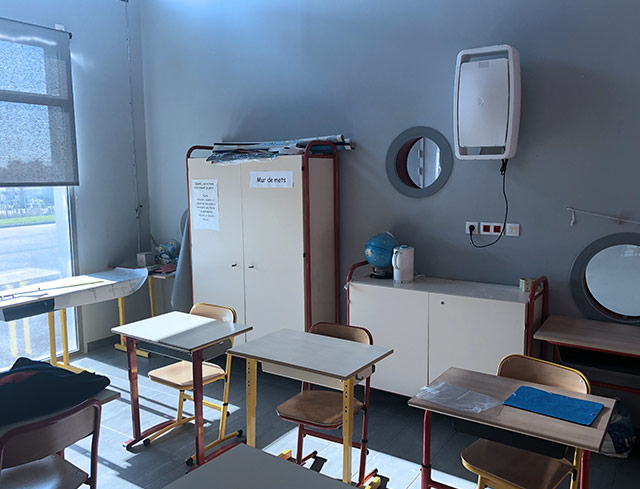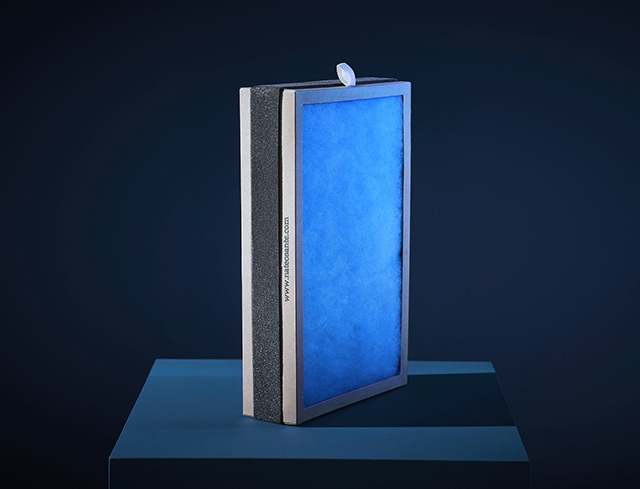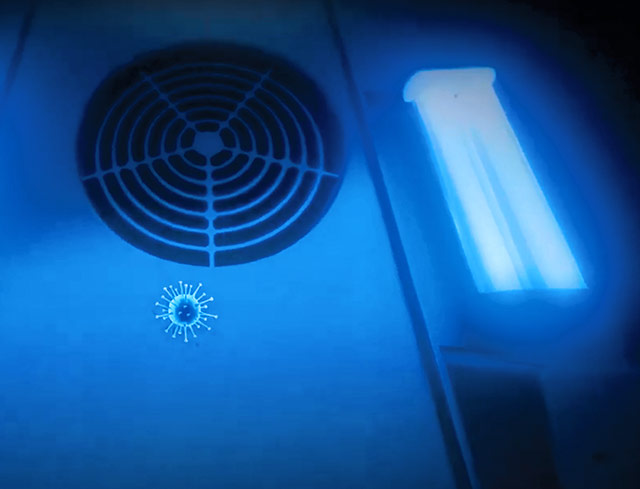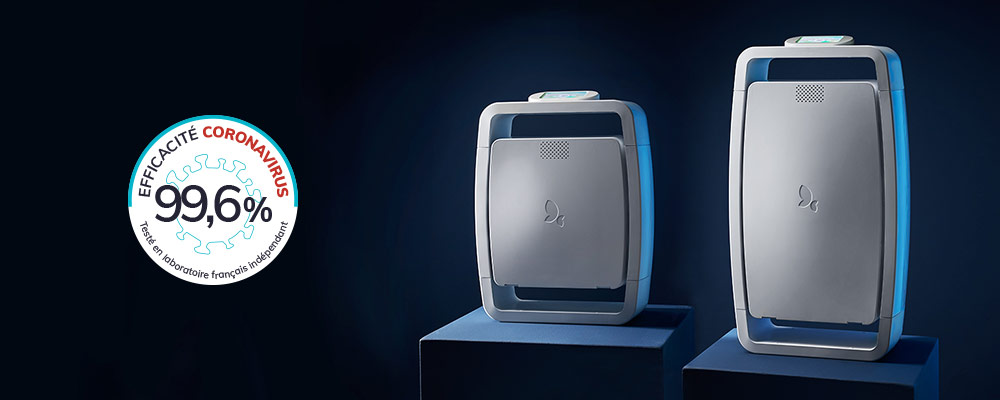Your cart is currently empty!
How efficient are Covid 19 air purifiers in 2022?
Since the end of January 2020, the coronavirus has disrupted the world’s everyday life. From the stupefaction of the first lockdown to the spread of the Omicron variant, knowledge has evolved. Maintaining barrier gestures remains a leitmotiv when, in addition, health protocols follow one another in companies, at school…
As the crisis unfolded, HEPA-filtered air purifiers and CO2 sensors gradually came to the fore in debates, including parliamentary ones, respectively as a complement to ventilation or aeration for the former and as anti-Covid room containment indicators for the latter. One trend is now confirmed: the ability to eliminate viruses and bacteria from the ambient air will remain an issue once the pandemic has been relegated to the status of an epidemic.

Two years ago, the first cases of Covid-19 were officially recorded in France, while this coronavirus had been circulating in China since at least November 2019. On 11 March 2020, the state of pandemic was declared by the WHO.
Six days later, France plunged into the first of its three lockdowns. A brutal shutdown of the country that lasted until May 10, 2020, that is to say one month and twenty-five days during which new uses imposed themselves by force of circumstance, including teleworking, for those who escaped partial unemployment, and its technological counterpart… videoconferences.
Still unknown to the general public at the time, an air purifier equipped with a HEPA 13 filter or a HEPA 14 filter (EN 1822 certified) quickly appeared as an additional ally for some of the most exposed populations.
Firstly, in the medical and hospital sector, which was then overwhelmed by patients with SARS-CoV-2, where it was necessary to protect caregivers as closely as possible. These devices, capable of capturing aerosols potentially carrying the virus in the air of a room, are all the more suitable in enclosed spaces, without the possibility of ventilation.

The HEPA filter, key element of an anti-Covid air purifier according to the opinion of the HCSP (French High Council on Public Health)
“Today, there is a consensus on the capacity of a HEPA filter to eliminate viruses if they are carried by these aerosols, explains Vincent Chevalier, R&D engineer at NatéoSanté. In a health context, this is the first argument to be made in favour of an air purifier like EOLIS Air Manager.”
If we refer to the debate, at the beginning of January 2022, concerning the bill on the vaccination pass, we note that amendment no. 508, defended and then rejected on 3 January by the deputies, aimed to “encourage the installation of indoor air purifiers without filters in establishments open to the public and in public transport“.
The case of schools and indoor air quality in classrooms, with the addition of CO2 sensors as an indicator of good or poor IAQ, was a particular focus of discussion in relation to public health issues. Discarded in view of the questionable effectiveness of non-filtered models.

For the models based on a HEPA filter, the Minister of Health Olivier Véran considered that they are relevant when “air renewal is impossible”, in line with the HCSP reference opinion (05/27/21).
This states:
- “To implement only mobile units with HEPA H13 or H14 filtration or equivalent filtration rate, meeting the standards for filters and intrinsic performance of the device;
- To provide, for each installation of mobile units in a given place, a preliminary technical study by a qualified person or by the industrial supplier”.
The French Association for the Prevention of Air Pollution (Association Pour la Prévention de la Pollution Atmosphérique) has published a guide (June 2021) on “the place to be given to mobile indoor air purification devices in the fight against the spread of the SARS-CoV-2 virus in enclosed spaces“.

It recalls that “to combat a deterioration in indoor air quality, the basic preventive measures to be adopted are the following:
- Reduce emission sources in order to limit exposure to physico-chemical and biological pollutants
- Ensure regular airing of premises and check that ventilation systems are working properly in order to dilute indoor pollutants with fresh air from outside and facilitate their removal”.
Finally, it recommends that “the assessment of the efficacy and safety of a mobile indoor air purifying device should be carried out at three levels: the purification technology(ies) chosen, the device itself, under laboratory test conditions, but also under real-life use.”
An air purifier 99.6% effective against coronavirus according to laboratory tests
Reminder on the respective efficiency of the captured particles:
- H13 greater than or equal to 99.95%
- H14 greater than or equal to 99.995%
“Beyond the filter itself, we must ensure that the air captured by the purifier will pass 100% through the mesh… and that there will be no leakage, adds Vincent Chevalier. On EOLIS Air Manager, for example, this optimal sealing is ensured at two levels: in the constitution of the filter and at the interface between the air purifier and the filter unit, where there is a high-performance seal.

The second argument of our model is the oxidation filter, which destroys micro-organisms.

The third is the action of the UV-C lamps: they have a biocidal effect on micro-organisms exposed to their light with a wavelength of 254 nm. They will also radiate onto the downstream surface of the HEPA filter, destroying the portion of micro-organisms trapped in the filter fibres. The life expectancy of a coronavirus is in the order of 2 to 3 days maximum. Exposure to UV-C reduces this time”.
In addition, the activated carbon filter – part of the filter unit – is effective against VOCs (Volatile Organic Compounds), i.e. chemical pollutants.
In a nutshell, the four elements of an anti-virus and Covid-19 air purifier are:
- HEPA filter 13 or 14
- Oxidation filter
- UV-C lamps
- Active oxygen
Laboratory tests have shown a 99.6% efficiency rate against coronaviruses of our professional reference EOLIS Air Manager.

The eventual shift to endemic status will not mean the disappearance of the virus
Interviewed in the media on 25 January 2022, Professor Jean-François Delfraissy, President of the French Scientific Council, mentioned a possible end of the 5th wave, between Delta and the Omicron variant, by next March.
The day before, Tedros Adhanom Ghebreyesus, Director General of the WHO, had expressed the view that it was possible to emerge “from the acute phase of the pandemic this year“. While the B-2-A variant, which appeared in Denmark, remains under close scrutiny… and countries are beginning to lift restrictions (in England at the end of January, in France in February, according to Prime Minister Jean Castex’s announcement on 20 January), the shift towards an endemic vision of Covid-19 is beginning to take hold in Europe.
It establishes the idea that we will have to live with this virus, adapt to it and get used to applying the “aerate, ventilate and purify” triptych.
Latest News
Find out about our latest news



